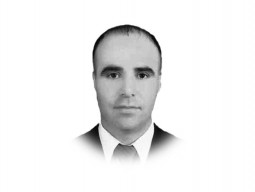
Although many analysts believe that the youth may vote for the Pakistan Tehreek-e-Insaf, but that may or may not be true. From colleges and universities to back in the villages and local constituencies, their voting behaviour may not be different from the clan, families and social groups they belong to. What may be decisive in favour of the PTI will be a big margin of the youth vote, not just the majority. This remains unpredictable, so is how many of them would get out and vote tomorrow.
The second important factor is the number of contestants in most of the constituencies. The disgruntled party leaders, aspiring for tickets but failing to secure the same are running as independents. They would take away a big chunk of votes from the major party candidates. Among hundreds of independent candidates, only a few may win, but they may cause upsets in many critical constituencies.
Third, the religious parties have entered the electoral races in big numbers. Never have they fielded so many candidates before in any previous general elections. They are contesting in every province and every region of the country. How that may impact the major political parties is a question which we cannot answer with any certainty. In Punjab, several of the religious parties that had been aligned with the Pakistan Muslim League- Nawaz would diminish its vote bank. The role of the religious parties as spoilers is not much talked about issue in the media, but I believe, it is going to hurt the PML-N more than any other party.
Fourth, the voter turnout will also determine the electoral fortunes of the two major contending political parties—the PTI and the PML-N, which of the two may benefit from a big turn- out and which may not, is also a contested issue. The most important task for each party on the election day is to bring their voters to the polling stations. The PML-N is known for having a well-oiled electoral machine and for mastering the art of election-day activism. It is not known how much the PIT has learnt from its past shortcomings in this respect, and how much it has prepared itself for the 2018 elections.
Finally, the characters of single-member constituency-driven parliamentary elections make it difficult to convert general popularity of a leader or a party into corresponding numbers in the assemblies. In the 2013 elections, the PTI was not able to make this conversion in Punjab or in Karachi.
Three-way party contests with so many spoilers in the run, may spring many surprises. What may not surprise however is the unlikelihood of the two major parties—the PML-N and the PTI—to secure a clear majority to form the next government each on its own.
Published in The Express Tribune, July 25th, 2018.
Like Opinion & Editorial on Facebook, follow @ETOpEd on Twitter to receive all updates on all our daily pieces.




1721805490-0/BeFunky-collage-(14)1721805490-0-165x106.webp)














COMMENTS
Comments are moderated and generally will be posted if they are on-topic and not abusive.
For more information, please see our Comments FAQ